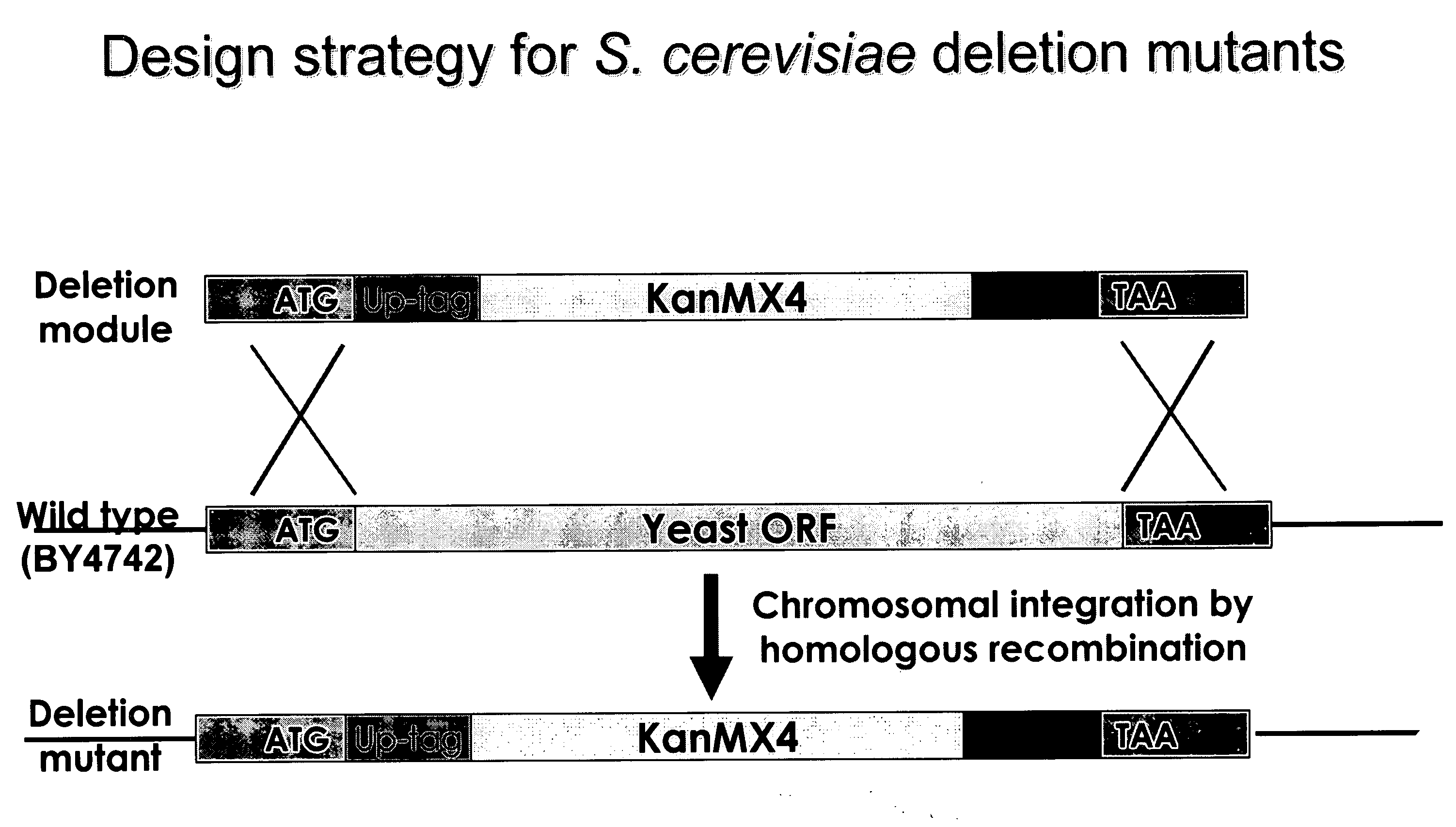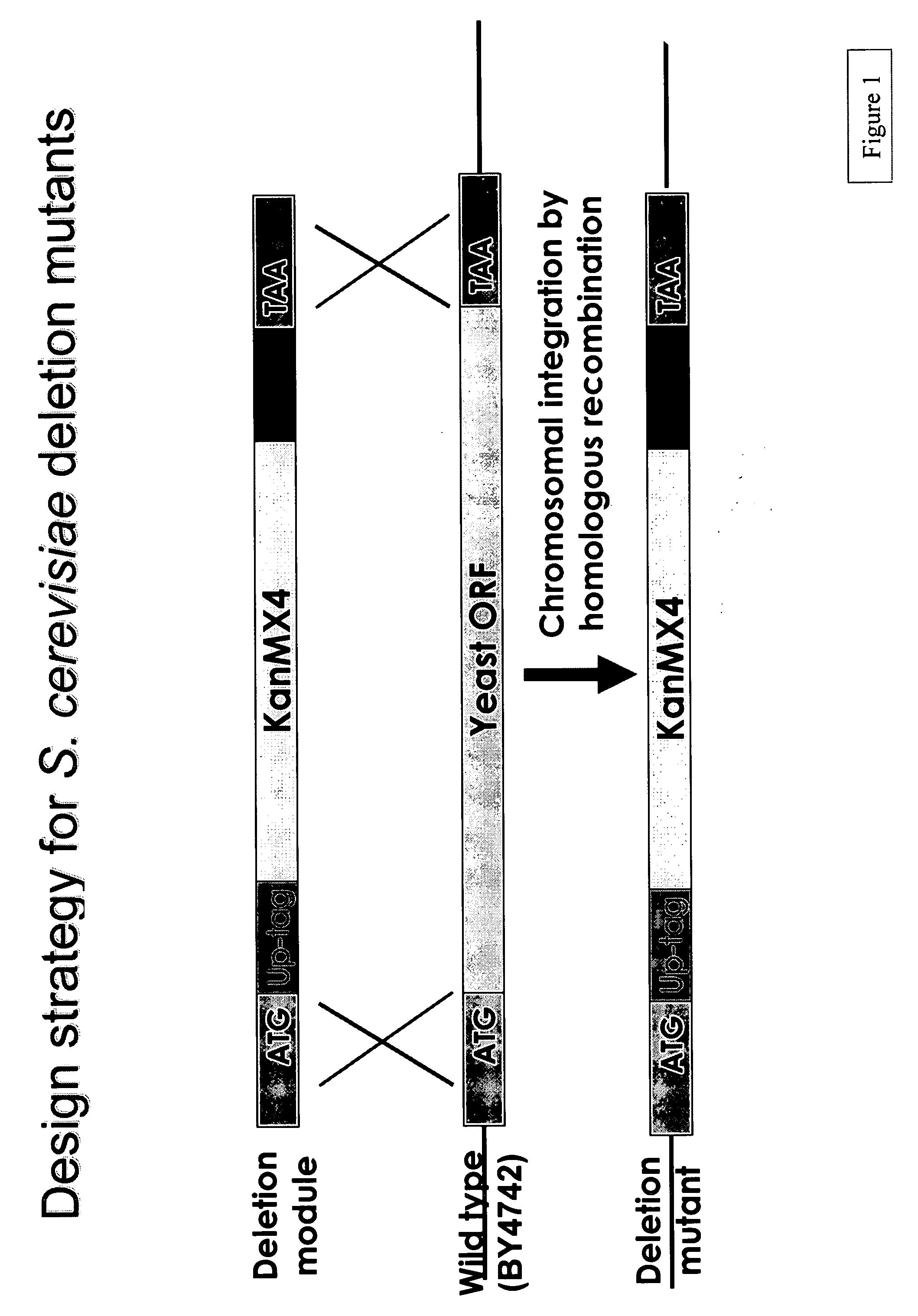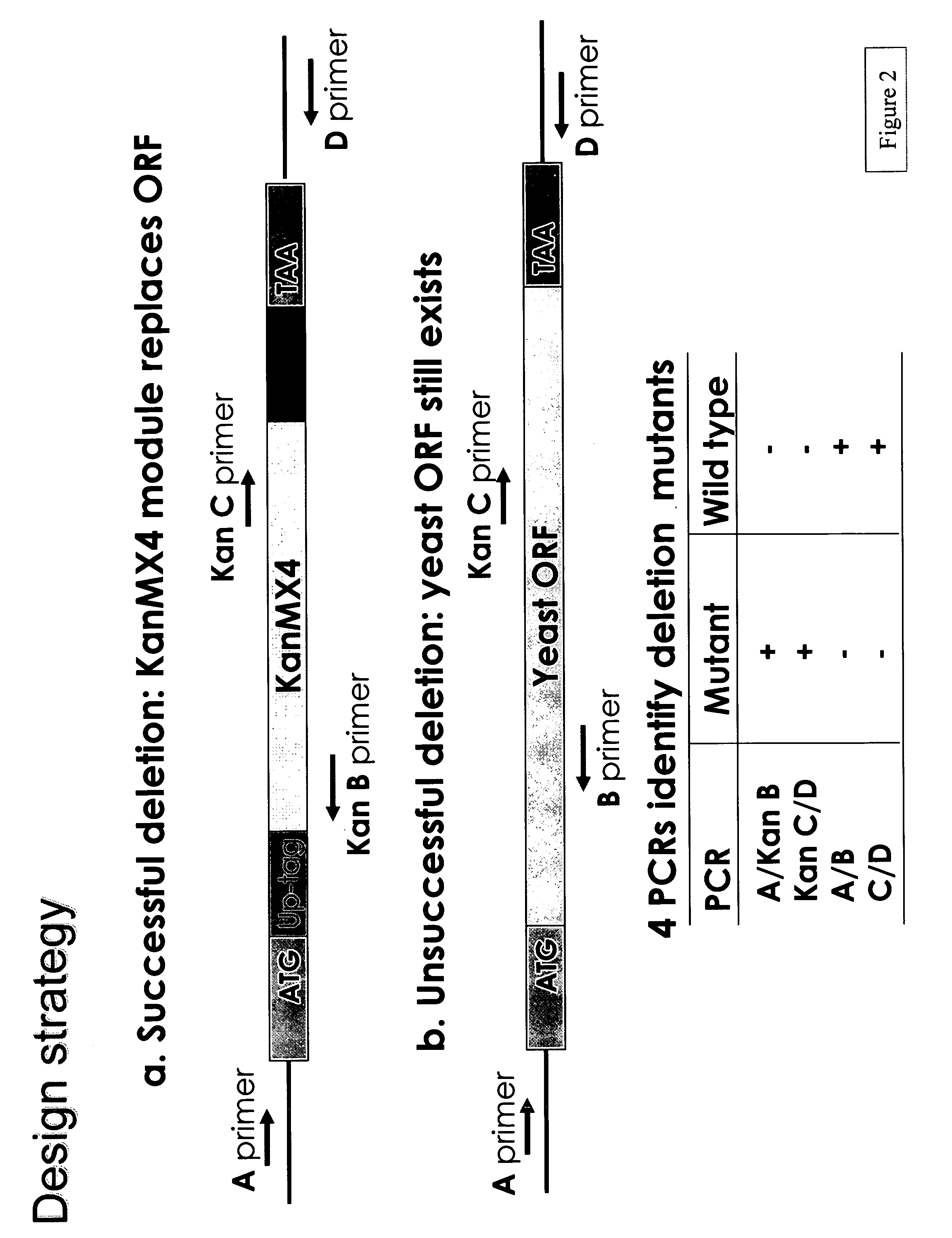Potentiation of antifungal compounds
a technology of antifungal compounds and potentiation, which is applied in the field of antifungal drugs and the treatment of fungal infections, can solve the problems of high concentration of tsa required, toxicity to the infected host, and “trailing growth”
- Summary
- Abstract
- Description
- Claims
- Application Information
AI Technical Summary
Benefits of technology
Problems solved by technology
Method used
Image
Examples
example 1
Generation of Yeast HDAC Deletion Strains
[0238]A PCR-generated deletion strategy was used to systematically replace each yeast open reading frame from its start- to stop-codon with a KanMX module and two unique 20mer molecular bar codes. (See Wach et al., Yeast 10: 1793-1808 (1994).) This strategy and potential outcomes are shown in FIGS. 1 and 2, respectively. The presence of the tags can be detected via hybridization to a high-density oligonucleotide array, enabling growth phenotypes of individual strains to be analyzed in parallel. A HOS2 deletion “cassette” was constructed using two sequential PCR reactions.
[0239]In the first amplification, 74 bp UPTAG (ATAACAACACGCAACATGGATGTCCACGAGGTCTCTTACTGGACGGCACGGTTTAT CGTACGCTGCAGGTCGAC) and 74 bp DNTAG (TAGCAAACTCTTAAACTACGGTGTCGGTCTCGTAGAACGGTTGCTAATGTTTCCGAT CGATGAATTCGAGCTCG) primers were used to amplify the KanMX gene from genomic DNA extracted from a yeast RPD3 heterozygote mutant (purchased from ATCC) which contains kanMX4 DNA who...
example 2
Antifungal Compound Sensitivity of Deletion Mutant Strains
[0243]Standard serial dilution techniques were used to determine sensitivity of yeast deletion strains to various antifungal agents. FIG. 3 shows that a ScRPD3 deletion mutant is not hypersensitive to ketoconazole or fluconazole. FIG. 4 shows that a ScHOS2 deletion mutant is hypersensitive to ketoconazole. FIG. 5 shows that a ScHOS2 deletion mutant is hypersensitive to itraconazole. FIG. 6 shows that a ScHOS2 deletion mutant is hypersensitive to voriconazole. FIG. 7 shows that a ScHOS2 deletion mutant is hypersensitive to fluconazole. FIG. 8 shows that a ScHOS2 deletion mutant is hypersensitive to fenpropimorph. FIG. 9 shows that a ScHOS2 deletion mutant is not hypersensitive to terbinazine. FIG. 10 shows that a ScHOS2 deletion mutant is not hypersensitive to Amphotericin B. FIG. 11 shows that a ScHOS2 deletion mutant is not hypersensitive to 5-fluorocytosine. FIG. 12 shows that a ScHOS2 deletion mutant is not hypersensitive ...
PUM
| Property | Measurement | Unit |
|---|---|---|
| Electrical resistance | aaaaa | aaaaa |
| Pharmaceutically acceptable | aaaaa | aaaaa |
| Sensitivity | aaaaa | aaaaa |
Abstract
Description
Claims
Application Information
 Login to View More
Login to View More - R&D
- Intellectual Property
- Life Sciences
- Materials
- Tech Scout
- Unparalleled Data Quality
- Higher Quality Content
- 60% Fewer Hallucinations
Browse by: Latest US Patents, China's latest patents, Technical Efficacy Thesaurus, Application Domain, Technology Topic, Popular Technical Reports.
© 2025 PatSnap. All rights reserved.Legal|Privacy policy|Modern Slavery Act Transparency Statement|Sitemap|About US| Contact US: help@patsnap.com



